Models and lifestyles are changing, the needs that emerge from them are changing and above all the places that host them are changing. Even in travel, an area increasingly intertwined with daily life.
By Antonia Zanardini – Editor-in-chief, Guest
Driven by the global pandemic phenomenon, the world of hospitality is evolving at an ever faster pace. New hospitality trends and formats are appearing on the market, and accommodation facilities, already undergoing considerable change, are becoming increasingly chameleon-like: whether bed and breakfasts or serviced residences, often created by hotel chains, guest houses, relais, historic residences, villages, so-called scattered hotels, hostels, condo hotels or student houses. In light of this proliferation of new accommodation models, which ones have the best chance of success today? And which will be increasingly sought after in the future? To answer these questions, in 2021, Guest organised a series of meetings to get to know and investigate the new trends in hospitality, and understand which formulas will be best able to meet future travel and accommodation needs, increasingly subject to rapid change. These events, attended by leading experts and professionals from the hospitality, design and real estate sectors, explored some of the phenomena and trends present in all formats and currently registering the strongest growth. This is the case, for example, with Slow Stay, which now involves locations such as historic villages, and has led to the creation of new formulas, such as scattered hotels; or Staycations and Workations, two emerging trends resulting from economic and social change, now strongly accelerated by the pandemic, Smart Hotels, targeting and focused on the needs of a clientele differentiated by age and requirements, and the Short Rent phenomenon, now finding a fast-growing channel in formulas such as Aparthotels and Condhotels. On each of these four themes, highly qualified panels of experts provided analyses and expressed viewpoints focused both on the present and, above all, on the growth potential that they could offer in a rapidly-evolving future.
Slow Stay: authenticity with accessibility
The pandemic has led to a major change in the very concept of holidays, both in terms of targets and needs. One of the trends emerging from this change is the Slow Stay, a concept of travel at a more human rhythm and on a more human scale, focused on the thousands of villages dotted around Italy waiting to be rediscovered with their traditions and environmental and cultural roots. A desire for experiences on a more human scale and a great opportunity to breathe new life into many regions, which can only be achieved through great attention to the quality of the offer in terms of accessibility, liveability, connection and environmental sensitivity. In this regard, the architectural and landscape redevelopment of this precious heritage is expressed both in new formulas, such as that of scattered hotels and in the increasingly important role attributed to technology. However, this technology must be efficient and at the same time invisible, improving the quality of life and people’s stay without being invasive so as to preserve a place’s beauty and spirit. Since this spirit is the focus of the holiday experience, it is important that the hospitality structures maintain, especially in the common areas, a close and constant relationship with the environment they are located in, offering guests a dialogue and an intimate connection with nature. This formula is working and is popular among the public, as evidenced by the numbers reported by the experts, which show not only strong growth in this particular offer, but also a significant presence of foreign visitors. The challenge for the next few years will be to continue this regeneration process for regions, respecting their authenticity, building traditions and spirit while improving accessibility.
Workation and Staycation: the office goes on holiday
The pandemic has joined other phenomena that have been under way for some time, on the one hand speeding up certain changes, and on the other giving rise to new ones. While staycations, or holidays at home or in the immediate vicinity, emerged with the economic crisis of 2008, workations, a hybrid between holiday and work, represent a “genetic mutation” of the two, and promise to be a significant, long-term phenomenon. On the one hand, staycations, with their rediscovery of familiar yet at the same time unknown places, are already generating ad hoc holiday packages focused on what we could call “exploring the neighbourhood”; on the other, workations represent a huge and in some respects revolutionary leap, with a stable, long-term change in the place of work, giving rise to the need for medium- to long-term stays in hospitality facilities. With this in mind, they will have to equip themselves not only with everything necessary for a quality stay, but also with the digital services that professionals now naturally expect. There are two strategic phenomena in play here: destination marketing, a promotional tool aimed at improving destinations’ appeal, from the most prestigious to those waiting to be discovered, and changes in the very bases of the design of these new hybrid environments, which will have to offer the same atmosphere as the accommodation component, but also incorporate hospitality services and be more flexible to accommodate a variety of functions. Again in this case, technology will play a leading role in all dimensions of the stay experience, from hospitality to work and socialising, as well as commercial formulas, which are already seeing the emergence of new experiences, such as in locations particularly linked to the region, the offer of free accommodation packages in return for the purchase of local products.
The smart hotel for young people and seniors
Target profiling has always been a valuable tool in hospitality, but it has now been boosted by new dimensions and formats, which vary according to guests’ age and generational needs. To keep step with this, facilities must become increasingly smart, flexible and multifunctional. At one end of the age scale, we have Student Hotels, a model of hybrid hospitality par excellence, which combines study, daily life, ways of socialising and customs aimed at a customer base immersed in our rapidly changing contemporary society; at the other end, we have Senior Living, sensitive to the needs of the older population, to which it provides services and living spaces of the highest functional and aesthetic quality. The nature of these new products, therefore, can be likened to that of a long stay rather than to a traditional tourist stay, and their design is not on the scale of the individual structure, but that of the urban fabric in which they are located, where private and public dimensions meet as an essential component to quality of life. While this concept is in some ways natural for a young guest profile, geared above all towards a multi-dimensional social life, for senior guests these new models also imply a cultural change that is in some respects revolutionary, the cornerstone of which lies in a concept of living that changes with age and therefore detaches itself from the traditional model of home ownership and the constant functions this must fulfil. As needs change, so do the places and services most appropriate for them, and the answers to these variabilities lie both in the choice of easily accessible locations and in a technological load that makes it possible to balance quality, nature and ways of living with changing social roles and age.
Short Rent: from Aparthotels to Condhotels
Changes in lifestyles, social patterns and experiences are by their nature closely linked to modes of travel and hospitality. Changes in the former are reflected very quickly in the latter. These trends give rise to a growing phenomenon, namely the blurring of the boundaries between the purely residential dimension and the hospitality dimension. On the one hand, housing increasingly incorporates functions and services traditionally linked to the hotel industry, while on the other, hotels are enhanced by references to residential spaces. They do so by creating hybrid formulas such as Aparthotels and Condhotels, residences designed for medium/long-term stays but at the same time able to offer an alternative to traditional hotels, even for short periods, for those who wish to experience a familiar, everyday domestic atmosphere while travelling. This has a clear impact on the design of these particular locations, where the design of the two dimensions tends to overlap in a discreet but clearly perceptible manner. On the one hand, spaces such as reception are tending to disappear, while on the other, private spaces take on a formal and distributive identity similar to that of the home, while incorporating services designed to make the stay pleasant, comfortable and emotionally gratifying. One factor plays an important role in the dissemination of these hybrid formulas: the need for social interaction and relationships, which for various reasons can be more effectively satisfied by formulas that are halfway between the hotel and the home, consisting of welcoming and well-kept spaces, private but at the same time capable of establishing relationships with the outside, in terms of both individual relationships and that with the urban environment in which the structures are located.

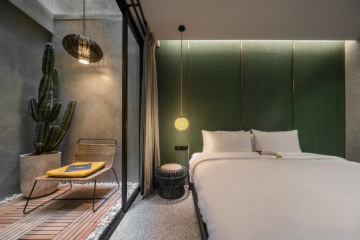
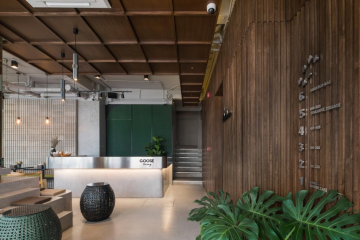
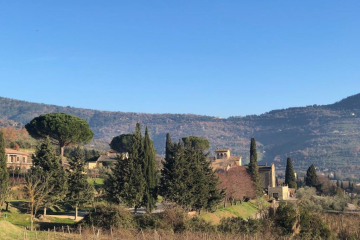
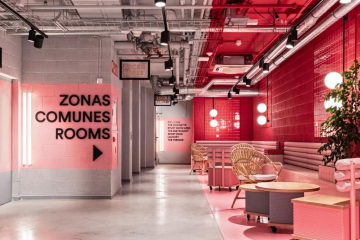
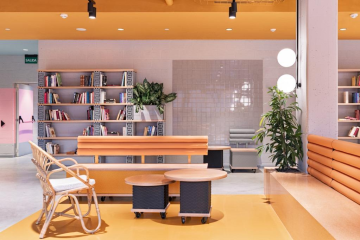
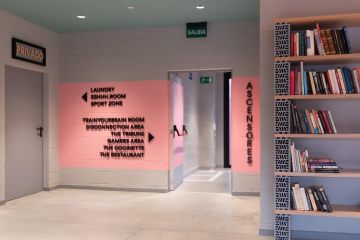
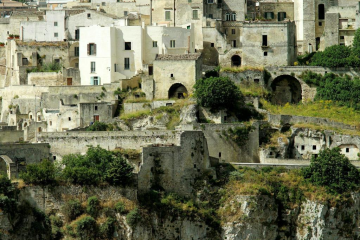
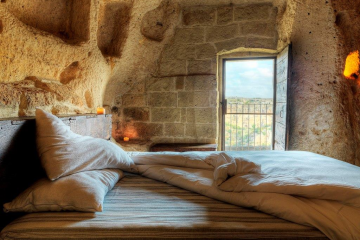
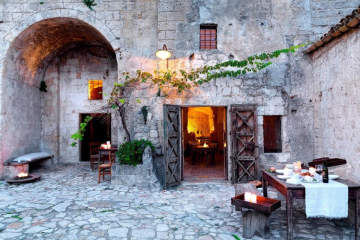
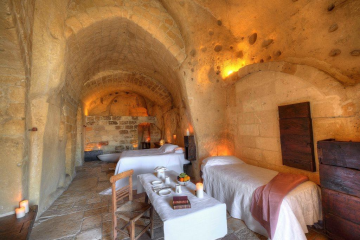
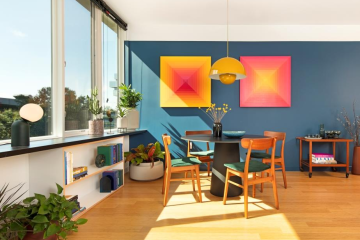
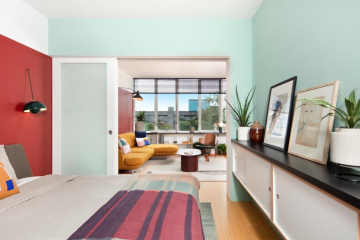


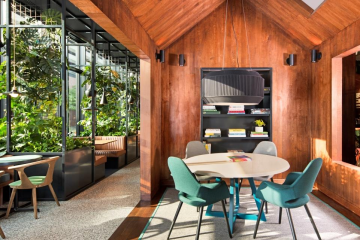
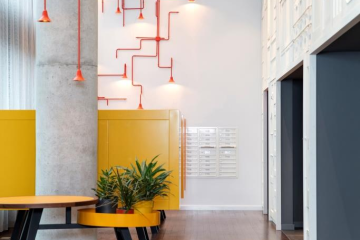
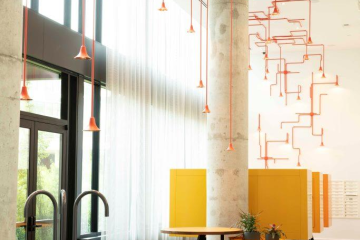
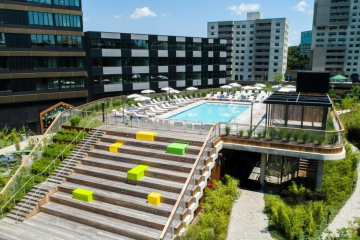
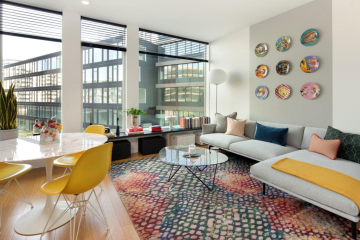
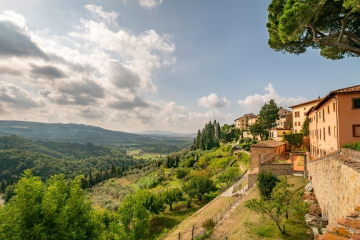
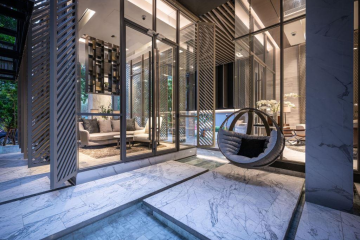

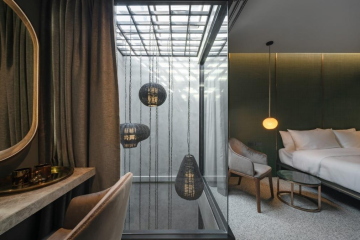


Sign-in with
Follow Hospitality through your socials and join your favourite events